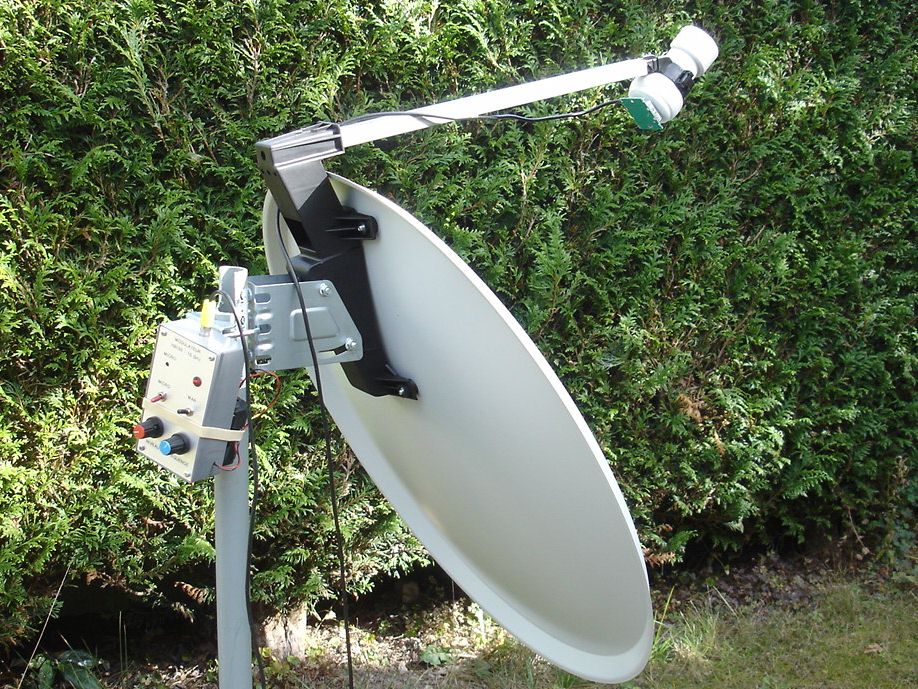10GHz eenvoudig qrv met een HB100
Foto F6HCC
Inhoud
The idea by radioclub F6KBO (PG540-Bretagne..)
Get active on 10GHz with some simple and cheap tools
description by F4VSJ, Hans
What do you need:
- a 60cm parabol antenna
- a simple LNB
- a HB100 Module
- a few electronic parts and PCB*
- a power supply or powerpack 12V (5V for first test only)
- A computer with a SDR Programm (described with SDRsharp on Debian Linux)
*PCB details are coming soon.
The schematic
eeee
Het laatste nieuws
Het laatste nieuws
10GHz eenvoudig qrv met een HB100 (Ervaringen van F4VSJ en radioclub F6KBO)
Jawel, eenvoudig QRV zijn op 10 GHz is een thema wat "we" in de radioklub F6KBO in werkelijkheid hebben gebracht.
HOE: Een HB100 module om te zenden en een LNB oö te ontvangen.
En dat alles in een 60cm schotel gemonteerd...
( de photos volgen...)
De eerste tests zijn gedaan over een afstand van 53km in 2 richtingen.
Howto install SRDSHARP in linux
GETTING STARTED ON LINUX For Linux we first recommend having a look at Ranous' Linux Quickstart guide document which can be found here (pdf).
The easiest way on most Debian Linux systems is to install rtl-sdr via apt-get.
This can be done with the following commands. We recommend using the most modern version of Linux OS that you can find for your system to get the latest drivers.
sudo apt-get update sudo apt-get install rtl-sdr
Instructions for installing the RTL-SDR drivers manually from source can be found at http://sdr.osmocom.org/trac/wiki/rtl-sdr.
Repeated below is the code:
sudo apt-get install libusb-1.0-0-dev git cmake git clone git://git.osmocom.org/rtl-sdr.git cd rtl-sdr/ mkdir build cd build cmake ../ -DINSTALL_UDEV_RULES=ON make sudo make install sudo cp ../rtl-sdr.rules /etc/udev/rules.d/ sudo ldconfig
After installing the libraries you will likely need to unload the DVB-T drivers, which Linux uses by default.
To unload them temporarily type:
sudo rmmod dvb_usb_rtl28xxu
into terminal.
This solution is only temporary as when you replug the dongle or restart the PC, the DVB-T drivers will be reloaded.
For a permanent solution, create a text file "rtlsdr.conf" in /etc/modprobe.d
and add the line "blacklist dvb_usb_rtl28xxu".
You can use the one line command shown below to automatically write and create this file.
echo 'blacklist dvb_usb_rtl28xxu' | sudo tee – append /etc/modprobe.d/blacklist-dvb_usb_rtl28xxu.conf
Now you can restart your device.
After it boots up again run
rtl_test
at the terminal with the RTL-SDR plugged in.
It should start running.
NOTE: Some devices like the Orange Pi zero have a bug in their current mainline OSes.
Instead of blacklisting "dvb_usb_rtl28xxu", you will need to blacklist "dvb_usb_rtl2832u".
If you installed rtl-sdr by "apt-get", you will need to update the black list file at /etc/modprobe.d/rtl-sdr-blacklist.conf manually too.
After installing the libraries and black listing the DVB-T drivers we recommend starting off with GQRX, a SDR program similar in operation to SDR#.
It can be downloaded via the package manager in your Linux distribution or from http://gqrx.dk/download.
We can now also recommend the multi-platform CubicSDR which can be downloaded from http://www.cubicsdr.com/.
If you want to install GNU Radio we recommend using Marcus Leech's script by typing the following into terminal.
This installs the RTL-SDR drivers as well.
wget http://www.sbrac.org/files/build-gnuradio && chmod a+x ./build-gnuradio && ./build-gnuradio
Note that if you want to run Linux in a virtual machine it has been reported that RTL-SDR performance with VirtualBox is rather poor due to it's slow USB connection.
VMWare Player on the other hand has good performance - just remember to set the USB controller to use the USB 2.0 protocol as by default it is set to USB 1.1.
Another good Linux quick start guide written by Kenn Ranous can be found here ([pdf]https://ranous.files.wordpress.com/2016/03/rtl-sdr4linux_quickstartv10-16.pdf).
